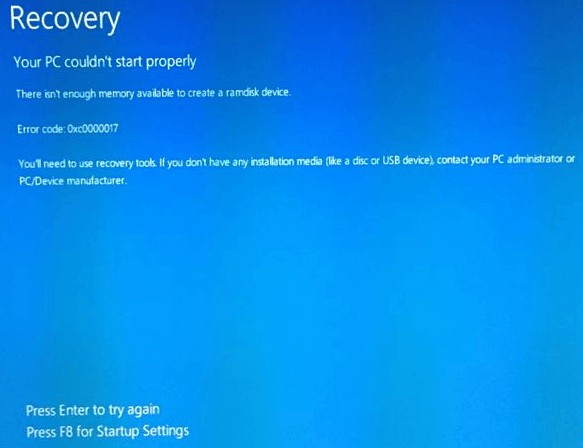

- Windows 7 blue screen memory management how to#
- Windows 7 blue screen memory management install#
- Windows 7 blue screen memory management drivers#
- Windows 7 blue screen memory management update#
- Windows 7 blue screen memory management Patch#
Type mdsched.exe into the Run box hit Enter and allow the tool to check your computer memory (RAM) for problems. Press Windows logo key and R at the same time to call the Run command. If you are facing random computer reboots or other system crashes (besides BSOD errors), it is possible that your memory could be corrupt.
Run Windows Memory Diagnostic Tool to Check for RAM Corruption: Sometimes hardware-related memory management blue screen errors occur due to memory (RAM) corruption. Running “chkdsk/f” in the command prompt may identify and rectify the cause of your BSOD. Microsoft has included a system tool called “chkdsk” (Check Disk) to scan and repair hard disk corruption. As a result, you may encounter memory management errors. Improper shutdowns, corrupt or incomplete installation of software and power outages can corrupt your file system and stored data. Check for Hard Drive Corruption (“chkdsk /f”): Your computer can develop errors on the hard disk drive due to repetitive, unintentional misuse. Windows 7 blue screen memory management install#
If updates are available, click the Install Updates button.
Windows 7 blue screen memory management update#
The Windows Update dialog box will pop up. Type “update” into the search box and hit ENTER. To check for Windows Updates (Windows XP, Vista, 7, 8, and 10), click the Start button.
Windows 7 blue screen memory management Patch#
Sometimes the BSOD problems can be simply resolved by updating Windows with the latest Service Pack or another patch that Microsoft keeps releasing constantly.
Install Windows Updates That Are Available: Microsoft continuously updates and improves Windows system files that could be associated with memory management. Even if it does not solve your blue screen error, some users have found their computers to perform better after this command has had a full run. SFC Scanner will now run through your system, checking for errors. Type ‘sfc/scannow’ into the black box that appears and press ‘Enter’. Right-click the Start button, and run ‘Command Prompt’ in admin mode. Run Windows System File Checker (SFC Scanner): SFC Scanner is a Microsoft tool (Windows XP, Vista, 7, 8, and 10) that allows you to scan for and restore corruptions in Windows system files. Note: Using System Restore will not affect your documents, pictures, or other data. If this works, then you will know that it is a software problem. Use Windows System Restore: If your computer recently started running into memory management errors, use System Restore to roll its system software back to a previous state when everything was working fine. Windows 7 blue screen memory management drivers#
Download the latest drivers from your PC manufacturer’s website and install them – this may solve BSODs caused by driver issues.
 Install Updated Drivers: An inaccurately installed or defected driver can lead to system crashes. So clean up this junk with Disk Cleanup as this might not only solve your error but this can also substantially speed up the performance of your PC. If these temporary files are not occasionally cleaned out, they can cause Windows Operating System to become sluggish leading to a MEMORY_MANAGEMENT error, possibly due to file conflicts or an overloaded hard drive.
Install Updated Drivers: An inaccurately installed or defected driver can lead to system crashes. So clean up this junk with Disk Cleanup as this might not only solve your error but this can also substantially speed up the performance of your PC. If these temporary files are not occasionally cleaned out, they can cause Windows Operating System to become sluggish leading to a MEMORY_MANAGEMENT error, possibly due to file conflicts or an overloaded hard drive. 
temporary files and folders) from normal web surfing and computer with the passage of time.
Clean out Your System Junk with Disk Cleanup (cleanmgr): Your computer piles up junk files (i.e. It is also likely that the blue screen you are seeing is due to a component of the malicious program itself. These malware can damage, corrupt, or worse even delete Blue Screen Errors related files. Conduct a malware scan: There is a possibility that your MEMORY_MANAGEMENT error could be related to a malware attack on your PC. If you often run into blue screens then you can try these troubleshooting tips mentioned below: Windows 7 blue screen memory management how to#
How To Fix BSOD Memory Management Blue Screen ErrorsīSODs can have a variety of root causes some of which have been mentioned above. Corruption in Windows registry from a recent installing or uninstalling of a software.Corrupted memory (RAM) is also known to cause blue screens.A damaged hard disk can also cause memory management error.Any damaged or removed system files after you finish installing software or drivers related to Windows Operating System.A driver conflict that occurs after installing new hardware.A virus or malware attack that has corrupted Windows system files or Windows Operating System related program files.A very common reason is erroneously configured, old, or corrupted device drivers.The BSOD errors can be caused by a number of software, driver, hardware or firmware issues. BSOD error on Windows 10 What Causes BSOD







 0 kommentar(er)
0 kommentar(er)
